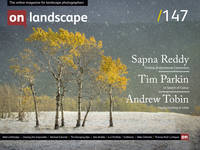Thomas Peck’s Critiques

Thomas Peck
The real pleasure of photography is that it forces me to slow down and really look. That’s never easy in our rushed world, so a chance to stop, look and see is truly valuable.
It is a commonplace of photographic analysis to point out that the camera does not see like the eyes see. The mono viewpoint (vs human binocular vision), the limitations of the frame, the ability to freeze movement or conversely to capture expanses of time, black and white – these are all structural/formal elements that belong to the machine of the camera rather than the mind’s eye. But in one sense they do come together. That is when the photographic image is made to reflect the emotional feeling and sensibility of the photographer. A ‘neo-Pictorialist’ approach to image making. Steve Gosling’s images do just that. They play with the camera’s technical facilities, not to record ‘reality’ but to convey emotion. John Szarkowski put it thus: “A photographer must define his relationship to the medium: Does he wish his hand to show, or will he try to make the picture look as though it were made by a machine? It is not a technical, but an aesthetic issue […] The question concerns intent and effect, not rule of procedure” (Szarkowski – Looking At Photographs, MoMa, 1973).

